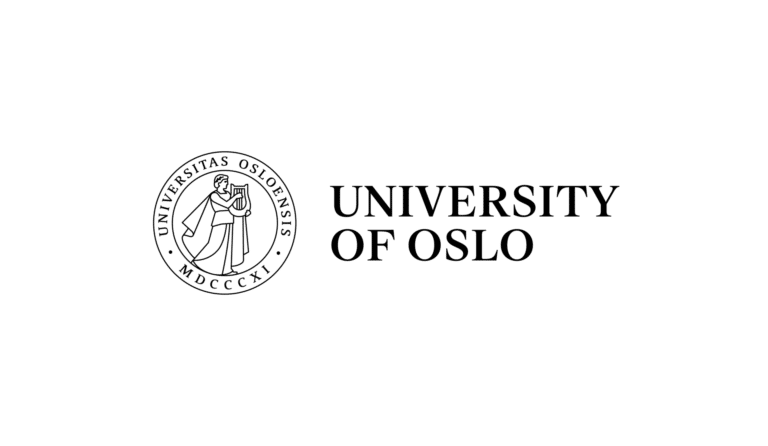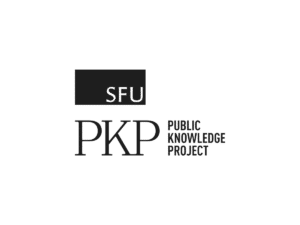

Organized in collaboration with the University of Oslo, the upcoming PKP Sprint will take place on June 2 and 3, 2025, in Oslo, Norway. Share on social media with the hashtag #pkpOslo2025
The Public Knowledge Project (PKP) fosters consistent engagement and collaboration with its community. During PKP sprints, community members have a direct impact on the development of PKP software. These interactive events provide a platform for brainstorming critical tasks, setting priorities, and collaborating on improvements to the PKP software. Participants usually collaborate on small-size projects that have teamwork potential and include a mix of both technical and non-technical tasks. Past events have focused on building plugins, documentation, conducting usability tests, and exploring new features.
The PKP sprint is open to:
· Programmers
· Journal managers
· Librarians
· User interface experts
· and other individuals involved in publishing
If you use OJS, OMP, or OPS for your publishing needs, and have ideas to improve these systems, we invite you to join our PKP sprint!
Registration is now closed. If you are interested in participating in another PKP Sprint, keep up to date with news and future events on our social media and website.
If you have any questions, contact commpkp@sfu.ca. Don’t forget to share on social media with the hashtag #pkpOslo2025
Read the summaries of our past Sprints and learn more about attending them on our PKP Sprints page.
DATE
June 2–3, 2025
LOCATION
Georg Sverdrups hus
Moltke Moes vei 39, 0851 Oslo
SCHEDULE
June 2, 2025
| 10:00 am | Arrival, Coffee, Snacks |
| 10:15 am | Introductions and Topic Selection |
| 10:45 am | Group Work |
| 1:00 pm | Lunch |
| 2:00 pm | Group Work |
| 4:30 pm | Questions and Wrap-Up |
| 5:00 pm | End time |
| 7:30 pm | Dinner* |
*Confirmed attendees only, please join us for dinner at Villa Paradiso Munch brygge
June 3, 2025
| 9:00 am | Arrival, Coffee |
| 9:15 am | Group Work |
| 11:30 am | Lunch |
| 12:30 pm | Group Work |
| 2:00–2:15 | Coffee break |
| 3:00 pm | Wrap-Up and presentations |
| 4:00 pm | End time |
Public transport to University of Oslo
The closest public transport stops are Universitetet Blindern (Tram – 8 min walk) and Blindern (T-bane/underground – 5 min walk). To get there from the city center you can use:- Tram number 17 Rikshospitalet and 18 Rikshospitalet to Universitetet Blindern.
- T-bane (Underground) number 4 Vestli, 5 Vestli and 5 Sognsvann to Blindern.
- If you wish to start your day with a short walk you can take any of the T-bane-lines (1, 2, 3, 4 or 5) to Majorstuen and walk 15-20 min to get to Georg Sverdrups hus.
How to buy tickets for public transport
In Oslo you can use the app Ruter to both buy tickets and plan your journey. The University of Oslo is within zone 1 (as is most of the city), and you can either buy tickets for each journey (the ticket is valid for one hour) or a ticket that lasts for 24 hours. You do not show your ticket to the driver, or validate it, you only need to show it if there is a ticket inspection. Read more about tickets and pricing on Ruter’s website . Another alternative app is EnTur, which covers public transport in all of Norway.City bike
Oslo City Bikes has stations all over Oslo, including 6 at the University campus Blindern. Using the Oslo City Bike app you can buy a pass for a single ride, or a “Discover Oslo” pass which lasts 72-hours. This allows you to use the bikes to get around, and you can use a bike for 60 minutes for each ride with the single pass, or for 180 minutes per ride with the “Discover Oslo”-pass. Read more on Oslo City Bike’s website.As the sprint-location is easily accessible by public transport, you can live pretty much anywhere in Oslo without too much trouble. Here we list some centrally located hotel suggestions with travel info to UiO:
- Anker Hotel or Anker Hostel (Storgata 55, 0182 Oslo): Budget friendly hotel and hostel. Take tram 17 Rikshospitalet or 18 Rikshospitalet from Nygata to Universitetet Blindern. About 25 min door-to-door.
- City Box (Prinsens gate 6, 0152 Oslo): 3-star hotel in the center of Oslo. Take the T-bane (underground) from Jernbanetorget. About 20 min door-to-door.
- Cochs Pensjonat (Parkveien 25, 0350 Oslo): Offers both hotel rooms for 1-2 people and small apartments for 2-4 people. Take tram 17 Rikshospitalet or 18 Rikshospitalet from Welhavens gate to Universitetet Blindern. About 20 min door-to-door.
- Comfort Hotel Xpress Youngstorget: (Møllergata 26) Offers single person rooms, double rooms and more. 5 min to walk to Storgata Tram Stop and 5 min to walk to Kirkeristen tram station. 10 min walk to Stortinget or Jernbanetorget T-bane stop. About 20 min door to door.
There are also a lot of options in the city centre from well-known hotel chains (Clarion, Thon, Scandic, Radisson etc.)
Getting from Oslo airport to Oslo city center
Getting from Oslo Airport to Oslo city center by public transport is usually a breeze. If you take the train you can either disembark at Oslo Central Station (Oslo S) or at Nationaltheatret (the national theatre) to get to the city center. Here are some transportation alternatives from the airport:
- Train R12 Kongsberg, RE10 Asker and RE11 Skien all stop at the Oslo Airport and in the city center. These are regional and local trains.
- Flytoget (Airport Express train) is the fastest way to get from Oslo Airport to the city center. It departs every 10 minutes and has a 19 min travel time to Oslo Central Station.
- Flybussen Connect (Airport bus) has several different lines which takes you to different parts of the city.
Other Oslo tips
Official tourist information center for Oslo
You can speak to knowledgeable staff members at the official tourist information of Oslo, Oslo Visitor Centre. It is located in the Central Station, in the yellowish building known as Østbanehallen.
Oslo Pass – Official City Card
The Oslo Pass gives you entry to museums and activities, free public transport, and discounts on sightseeing, restaurants, shopping etc.
Oslo’s islands
With your Ruter tickets, you can also use the Ruter-boats and take a trip to one (or more) of Oslo’s islands.
Norsk Folkemuseum / Norwegian Museum of Cultural History
Norsk Folkemuseum is Norway’s largest museum of cultural history. The 160 buildings in the Open-Air Museum represent different regions in Norway, different time periods, as well as differences between town and country, and social classes. The Gol Stave Church dating from 1200 is one of five medieval buildings at the museum. The contemporary history is presented through exhibitions and documentation projects. Permanent indoor exhibitions include folk art, folk costumes, toys and Sami culture. There are also a variety of temporary exhibitions and audience programs all year round.
Vigeland Museum and Sculpture Park
The Vigeland Museum has an almost complete collection of Gustav Vigeland’s art. In the permanent exhibition you can experience several of the iconic plaster originals for the sculptures in the park, his earliest works and many of his famous monuments and portrait busts.
The sculpture park is Gustav Vigeland’s life work, comprising over 200 sculptures in granite, bronze and wrought iron. It was installed mainly in the period 1940-1949, but is nevertheless a result of over 40 years of work. The park is always open and free of charge.
Deichman Bjørvika / Oslo Public Library, Main Branch
Oslo’s main library is located in Bjørvika near the city’s iconic Opera House. It is a modern and dynamic library that contains not only Deichman’s extensive book collections, but also a movie theatre, media workshops, gaming zones, lounges and a restaurant – among other things. From the top floor you have a great view of the Oslo fjord. Here you will also find the Future Library, an art project where 100 recently written books will be stored for 100 years. Only in 2114, the books will be printed and published.
MUNCH (museum)
MUNCH is home to the world’s largest collection of world-renowned Norwegian artist Edvard Munch (1863-1944). The museum’s new building, designed by Estudio Herreros, opened on Oslo’s waterfront in 2021, and houses several galleries and performance spaces over 13 floors.
The National Museum
The largest art museum in the Nordic countries. Here you can experience both older and modern art, as well as contemporary art and design, all under one roof. The National Museum gathers the collections of the former National Gallery, the Museum of Contemporary Art, and the Norwegian Museum of Decorative Arts and Design.
The Natural History Museum
This is Norway’s largest natural history museum with a botanical garden and exhibitions on zoology, geology and climate. The museum is a part of the University of Oslo and consists of the Botanical Garden and the museum buildings at Tøyen in central Oslo. They also offer free guided tours in the Botanical Garden otherwise the garden is open for all without charge every day from 7-17.
You can find more suggestions for things to do in Oslo on these websites:
- Things to do in Oslo: Tips by Tripadvisor
- Free things to do in Oslo: Visit Norway
Sponsors play a vital role in the success of our sprints. That is, sponsoring a sprint means you are giving directly back to the development of free and open-source (FOSS) software for scholarly publishing, which impacts global publishing landscapes and ecosystems.
Since sprints are free for community members to attend, sponsorship funds help us cover event costs, and allow us to offer a Sprint Scholarship to cover travel expenses for a PKP Member who has contributed their time and expertise to the project. Sponsorship suggestions can be found below. We are grateful for all contributions; please contact us if you are interested in sponsoring the Sprint.
Amount: $500 and above
Benefits:
- Logo placement on the Sprint website
- Verbal acknowledgment in opening and closing remarks
- Publicity in the PKP community newsletter, Archipelago
- Acknowledgements in social media posts about the sprint
Amount: $1000 and above
Benefits:
- All benefits listed in “$500 and above”
- Publicity on the sprint scholarship information page and scholarship announcement materials (“funded by sponsor”)
- Opportunity to contribute a guest post to PKP’s News Blog (interview questions will be provided, opportunity to showcase organization, dates to be determined)
If you’re interested in sponsoring this sprint, please get in touch!

